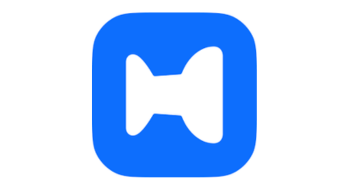
| Starting Pricing | Free |
|---|
Scheduling software eliminates the chaos of manual calendar management by automating employee shifts, client appointments, and resource allocation. Whether you’re managing a retail team across multiple locations or coordinating client meetings, the right scheduling tool reduces no-shows, prevents double bookings, and provides complete visibility into who’s working when.
Find the right scheduling software for your needs at SaasGenius.
Discover our carefully compiled list of the best value scheduling software solutions available on the market. Say goodbye to manual scheduling problems and embrace the power of automation and optimization.

| Starting Pricing | Free |
|---|
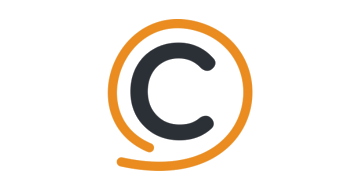
| Starting Pricing | $12/month |
|---|---|
| Pricing Model | Subscription Based |
| Free Trial | Yes |
| Free Version | Yes |
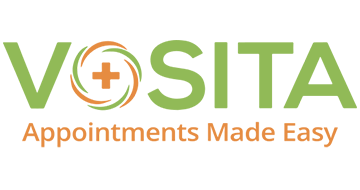
| Starting Pricing | $69/mo |
|---|---|
| Pricing Model | Per User |
| Free Version | Yes |
| Free Trial | Yes |
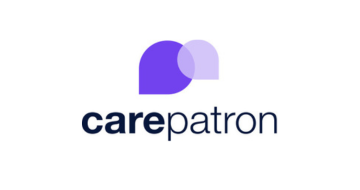
| Starting price | $9.50/mo |
|---|---|
| Free plan | No |
| Free version | Yes |
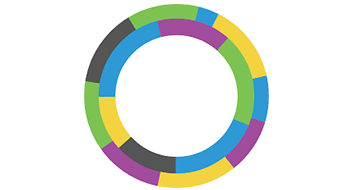
| Starting price | $9.6/mo |
|---|---|
| Pricing model | Per User |
| Free trial | Yes |
| Free version | Yes |
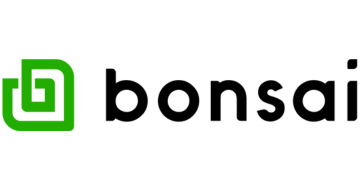
| Starting price | $17/month |
|---|---|
| Pricing model | Per User |
| Free Trial | Yes |
| Free Version | No |
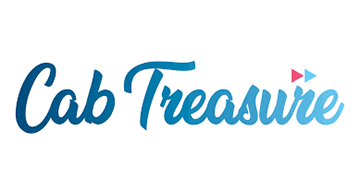
| Starting price | Free |
|---|---|
| Pricing model | Free (Open source) |
| Free Trial | Yes |
| Free Version | Yes |
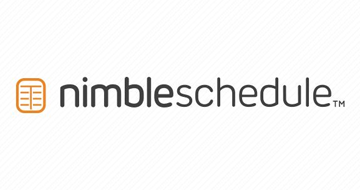
| Starting price | $1/month |
|---|---|
| Pricing model | Per User, Subscriber based |
| Free Trial | Yes |
| Free Version | No |
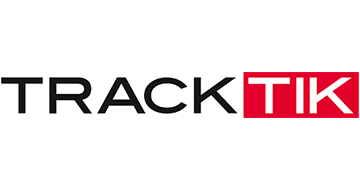
| Starting price | Contact for price |
|---|---|
| Pricing model | Subscriber based |
| Free Trial | Yes |
| Free Version | No |
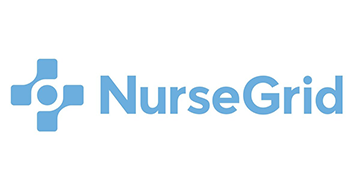
| Starting price | $349/mo |
|---|---|
| Pricing model | Subscriber based |
| Free Trial | No |
| Free Version | Yes |
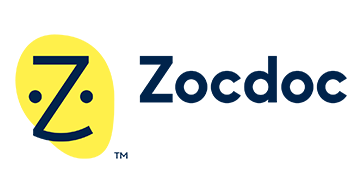
| Starting Price | Fee varies based on location |
|---|---|
| Pricing Model | Location-based |
| Free Trial | No |
| Free Version | Yes |
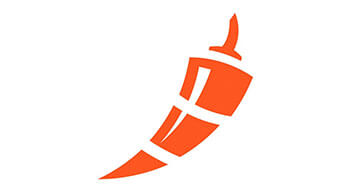
| Starting price | $25/mo |
|---|---|
| Pricing model | Per User |
| Free Trial | No |
| Free Version | No |
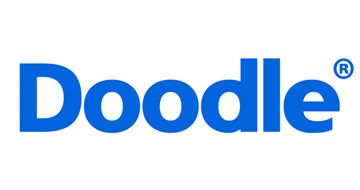
| Starting price | $6.95/mo |
|---|---|
| Pricing model | Per User |
| Free Trial | 14-day |
| Free Version | Yes |
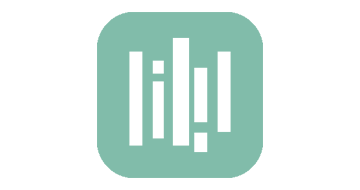
| Starting price | $10/mo |
|---|---|
| Pricing model | Per calender |
| Free Trial | 14-day |
| Free Version | Yes |

| Starting price | $10/mo |
|---|---|
| Pricing model | Per Seat |
| Free Trial | 14-day |
| Free Version | Yes |
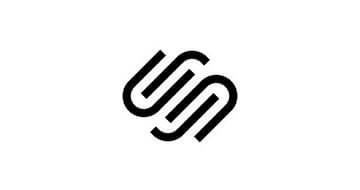
| Starting price | $15/mo |
|---|---|
| Pricing model | Per calender |
| Free Trial | 7-day |
| Free Version | No |
Scheduling software is a customer management tool that helps companies organize their employees’ work schedules. These tools allow managers to schedule employees’ hours and tasks with minimal input from workers. They also provide alerts when workers are scheduled to work overtime or are in danger of missing deadlines.
The main advantage of a scheduling solution is that it allows managers to see all employee schedules. This lets them find out who has time available and who doesn’t, making it easier to schedule shifts around available staff members. Some scheduling systems also allow managers to assign tasks to specific employees based on their skill sets and availability.
Scheduling solutions can be used by any organization with multiple employees who need to coordinate their workloads. It’s beneficial for businesses with more than one location or multiple departments, such as retail stores or restaurants with several locations spread across town or even across the country.
Different businesses require different scheduling approaches. Understanding which type fits your needs helps narrow down your options and ensures you invest in software that actually solves your specific challenges.
Employee scheduling tools focus on shift management, labor cost tracking, and workforce management. These platforms help managers create rotating schedules, track overtime, and ensure compliance with labor laws. Retail stores, restaurants, healthcare facilities, and call centers rely heavily on this type of software to manage hourly workers across multiple shifts and locations.
Appointment scheduling platforms streamline customer bookings for service-based businesses. Clients can book appointments online 24/7, receive automated reminders, and reschedule without phone tag. This type works particularly well for healthcare providers, consultants, salons, fitness studios, and professional services where client appointments drive revenue.
Project management software with scheduling capabilities helps teams plan timelines, allocate resources, and track deliverables. These tools use Gantt charts, Kanban boards, and dependency tracking to keep complex projects on schedule. Development teams, marketing agencies, construction firms, and professional services use this software to coordinate multi-phase projects.
Resource scheduling focuses on allocating equipment, rooms, vehicles, and other physical assets alongside people. Manufacturing facilities, event venues, equipment rental companies, and organizations with shared spaces need this functionality to prevent conflicts and maximize asset utilization.
A scheduling solution is a piece of software that helps you manage your schedules. Customers can use it to schedule appointments and meetings, among other things. Some people even use it to schedule their exercise time or time with their family.
The goal of scheduling solutions is to make your life easier by managing your daily schedule much easier. There are many types of scheduling solutions available, so you’ll be able to find one that fits your needs.
Here is a look at some basic functions of a scheduling software:
The process of scheduling employees is a core feature of any scheduling app. Users can quickly assign shifts based on availability, employee skill sets, and other factors with this feature. Once the schedule has been created, users can send it out to their team members via email or text message, so there’s no confusion about what needs to happen each day.
Communicate with your customers through email or text message alerts. For example, when a customer calls in to make an appointment, you can send them a text message reminder of their appointment time and location.
To create our rankings, we use a unique Genius Score that ranges from 0 to 100. This objective score helps you make an informed decision based on the software’s capabilities and user satisfaction. At SaasGenius, our mission is to simplify your software selection process and ensure you find the best solutions for your planning needs. For a full understanding of our rating methodology and how we determine the Genius Score, we encourage you to visit our rating methodology page.
Here are some of the features that you should look for when considering a scheduling solution:
The process of shift scheduling is the most important feature of this software. It allows you to create employee schedules for each day of the week. You can also create different shifts for different days of the week and set up holiday schedules for your employees. Users can customize the shifts according to their business needs and requirements.
The process of employee scheduling is another important feature of a scheduling solution. It allows you to make employee-to-employee assignments by simply dragging and dropping employees onto their corresponding shifts. This will help you reduce the time it takes to manage your employees’ schedules since you do not have to assign them their shifts each day manually.
You can schedule your work and activities with the help of calendars. The program provides a calendar for each employee, which shows their working schedule for the current month. You can set up recurring tasks and events, including holidays, vacations, and other important dates that you want to remember.
Automated reminders reduce no-shows by sending text messages, emails, or push notifications to employees and clients. You can configure reminders to go out 24 hours before a shift or appointment, with follow-up reminders closer to the scheduled time. This feature alone can reduce missed appointments by up to 40% while saving your team from manual reminder calls.
Mobile scheduling apps put your calendar in employees’ pockets. Staff can view schedules, swap shifts with manager approval, request time off, and clock in from their smartphones. Managers can approve changes, handle emergencies, and update schedules from anywhere, which is particularly valuable for multi-location businesses or remote teams.
Advanced scheduling platforms provide insights into labor costs, peak staffing times, overtime trends, and attendance patterns. These analytics help you optimize staffing levels, identify scheduling inefficiencies, and make data-driven decisions about labor allocation.
Your scheduling software should connect with your existing tech stack. Look for integrations with time tracking expense software, payroll systems, communication tools, accounting software, and project collaboration software. These connections eliminate double data entry and ensure information flows seamlessly across your organization.
| Feature | Small Business Priority | Mid-Size Business Priority | Enterprise Priority |
|---|---|---|---|
| Drag-and-drop scheduling | High | High | High |
| Mobile app access | High | High | High |
| Automated reminders | High | High | High |
| Time-off management | Medium | High | High |
| Multi-location support | Low | High | High |
| Advanced analytics | Low | Medium | High |
| API access | Low | Low | High |
| Custom workflows | Low | Medium | High |
| Compliance tracking | Medium | High | High |
| Budget forecasting | Medium | High | High |
Most businesses can realize various benefits from using a scheduling solution in their daily activities. Here is a breakdown of common benefits:
Scheduling solutions help employees know what time they need to be in each day. It also helps them know if they have any time conflicts with other employees or their schedules. This allows them to arrive at work on time and ready to go, which reduces the amount of wasted time spent waiting for others or trying to coordinate schedules by phone.
Having a regular schedule makes life easier for employees because it reduces the time spent wondering when they will be working next and what shifts they will be assigned. This also improves morale.
When managers use scheduling tools, it allows them to communicate with various departments within their organization. Therefore, everyone knows where people are needed most at any given moment in time.
This helps improve communication between departments and ensures that nothing slips through the cracks due to a lack of communication between managers and employees.
Managers enter new information into their scheduling system. This includes who’s staying home sick or leaving early for vacation; those updates automatically appear on all devices used by team members.
Hence, everyone receives accurate information at once. This prevents confusion caused by outdated information and reduces the need for repeated requests for updates.
Smart scheduling prevents overstaffing during slow periods and understaffing during peak times. The software can forecast labor needs based on historical data, seasonal trends, and upcoming events. By matching staff levels to actual demand, businesses reduce unnecessary labor costs while maintaining service quality.
Labor laws around breaks, overtime, and minor work restrictions vary by location and industry. Scheduling software can enforce these rules automatically, flagging potential violations before schedules go live. This proactive compliance reduces legal risks and protects your business from costly penalties.
| Industry | Key Scheduling Needs | Critical Features |
|---|---|---|
| Healthcare | 24/7 coverage, certification tracking, on-call scheduling | Credential management, shift swapping, emergency coverage |
| Retail | Peak season scaling, part-time workforce, POS integration | Sales forecasting, availability requests, multiple locations |
| Restaurants | Tip reporting, section assignments, last-minute changes | Table management integration, shift trading, labor cost tracking |
| Professional Services | Client billing, project alignment, capacity planning | Time tracking integration, project codes, utilization reports |
| Manufacturing | Shift rotations, skills matching, production schedules | Equipment scheduling, competency tracking, production targets |
| Education | Room booking, teacher availability, course conflicts | Academic calendar sync, substitute management, resource allocation |
Scheduling solutions can help small and medium businesses manage their employees’ schedules, customer appointments, and other tasks. This allows them to work more efficiently by cutting down on the time it takes to create a schedule.
Scheduling software can also help companies manage their workforce more effectively by providing the tools needed to keep track of overtime hours worked, vacation days available, and time-off requests.
Many companies that use scheduling solutions have employees who work from home or move around frequently during the day, making it hard for employee to stay in touch with supervisors, managers, and co-workers.
Scheduling solutions help keep everyone in sync by allowing users to send messages instantly through email or text messaging systems and communicate face-to-face through video conferencing capabilities built into many programs.
Small businesses benefit from scheduling software by eliminating the chaos of spreadsheets and group texts. Even with a small team, coordinating availability, managing time-off requests, and ensuring adequate coverage consumes valuable time. Affordable scheduling platforms designed for small businesses often include free tiers or low per-user pricing that makes automation accessible without breaking the budget.
Mid-size organizations juggle more complex scheduling scenarios across departments, locations, and job roles. These companies need workforce management capabilities that go beyond basic calendars, including skills-based scheduling, labor budget tracking, and integration with HR systems. The right scheduling software scales with growth, accommodating new locations and expanding teams without requiring a complete platform change.
Enterprise organizations require robust scheduling platforms with advanced security, compliance tracking, and customization options. These companies often operate across multiple time zones, have complex union requirements, and need detailed analytics for workforce planning. Enterprise scheduling software integrates with existing ERP, HRIS, and payroll systems while providing the API access and customization needed for unique business processes.
Most scheduling solutions are subscription-based, with pricing based on the number of users or seats. Per-user, per-month pricing is the most common pricing model for this keyword category. However, you may also see volume-based pricing as an option.
Typical price range levels vary depending on whether you’re looking for a cloud-based or on-premise solution and what features are included in your chosen product. Here are some examples:
This model charges you a flat fee each month for each employee who uses the software. If you have ten employees who use the software, you’ll pay $100 per month regardless of how many hours they spend on it.
Some scheduling solution providers charge based on volume — meaning how many appointments are scheduled over a given period (e.g., per month).
Many scheduling platforms offer free plans with limited features, perfect for very small teams testing the waters. These typically cap users at 5-10 people and restrict advanced features like integrations, custom branding, and detailed analytics. Free trials lasting 14-30 days let you test premium features before committing to a paid plan.
Entry-level plans typically start around $2-5 per user per month, covering basic scheduling, mobile access, and standard reporting. Mid-tier plans in the $5-15 per user per month range add integrations, advanced analytics, multi-location support, and priority support. Enterprise plans require custom quotes but include dedicated account management, custom integrations, advanced security, and SLA guarantees.
Rolling out new scheduling software requires more than just signing up and hoping for adoption. Successful implementations follow a structured approach that gets buy-in from staff, ensures proper setup, and creates habits that stick.
Don’t roll out scheduling software company-wide immediately. Select one department or location to pilot the system for 2-4 weeks. This contained approach lets you identify issues, gather feedback, and refine your processes before wider deployment. Pilot groups become internal champions who can help train others and troubleshoot common questions.
Take time to set up your scheduling rules, labor laws, and employee qualifications before creating schedules. Define minimum rest periods between shifts, overtime thresholds, skill requirements, and location permissions. Front-loading this configuration prevents scheduling violations and saves you from fixing mistakes later.
Most scheduling platforms let you import employee information, past schedules, and time-off balances. Use this capability to start with a complete picture rather than building from scratch. Historical data also helps the system provide accurate forecasting and labor analytics from day one.
Schedule short, focused training sessions by role rather than company-wide meetings. Managers need different training from frontline staff, and 30-minute targeted sessions work better than hour-long overviews. Record these sessions for new hires and create quick reference guides for common tasks.
Establish rules about schedule access, change requests, and approval workflows before launch. When do schedules get published? How far in advance? What’s the process for shift swaps or time-off requests? Clear protocols prevent confusion and reduce the number of “emergency” questions managers field.
Even excellent scheduling software can’t fix underlying process problems. Watch for these common pitfalls that undermine scheduling effectiveness and frustrate employees.
Last-minute schedules create unnecessary stress and make it harder for employees to plan their lives. Aim to publish schedules at least 7-14 days in advance for hourly workers and 30+ days for professional services. Consistent timing builds trust and improves retention.
Scheduling people when they’ve marked themselves unavailable leads to no-shows, resentment, and turnover. Respect availability preferences entered into the system, and address conflicts before publishing schedules. When you must override availability, communicate directly with the affected employee.
More features don’t always mean better outcomes. Start with core scheduling functionality and add complexity only when needed. Businesses that try to customize every option upfront often create confusion and slow adoption. Simple, consistent processes win over elaborate workflows.
Scheduling software provides data about attendance patterns, but you need to act on it. Regular no-shows or chronic lateness indicates deeper issues with scheduling, management, or employee engagement. Use the reporting features to identify trends and address root causes rather than just rescheduling around problem employees.
Manual transfer of hours from your scheduling system to payroll wastes time and introduces errors. Most modern scheduling platforms integrate with major time tracking expense software and payroll providers. Set up these integrations early to ensure accurate pay processing and eliminate duplicate data entry.
As your scheduling needs mature, these advanced capabilities can provide significant competitive advantages and operational efficiencies.
Artificial intelligence analyzes historical data, sales patterns, and employee performance to generate optimized schedules automatically. These systems learn over time, improving their recommendations based on outcomes. AI scheduling can reduce labor costs by 5-15% while maintaining or improving service levels.
Predictive analytics forecast busy periods based on weather, events, promotions, and historical trends. This foresight lets you schedule appropriately rather than reacting to understaffing or overstaffing situations. Restaurants, retailers, and service businesses see immediate ROI from better demand matching.
Some platforms include shift marketplace features where employees can pick up open shifts, trade with approved coworkers, or drop shifts that others claim. This self-service approach reduces manager workload while giving employees more control over their schedules.
Advanced systems track employee certifications, skills, and training levels, then automatically match scheduled tasks to qualified staff. This ensures you always have someone capable of handling specialized equipment, procedures, or client needs during every shift.
Mobile apps with geofencing verify that employees are actually at the work location before allowing clock-ins. This feature prevents time theft, ensures accurate payroll, and provides peace of mind for businesses with multiple locations or remote work sites.
Scheduling software handles sensitive employee data including contact information, availability, and often compensation details. Choosing a platform with strong security protections and compliance features isn’t optional for responsible businesses.
Look for platforms that encrypt data both in transit and at rest. This protects employee information from interception and unauthorized access. Ask vendors specifically about their encryption standards (AES-256 is the current gold standard).
Granular permission settings let you control who sees what information. Managers might need to see full schedules and pay rates, while employees should only see their own shifts and availability. Department-level access restrictions help multi-location businesses maintain appropriate information boundaries.
Comprehensive audit logs track every schedule change, approval, and modification with timestamps and user information. These trails prove invaluable during disputes, investigations, or compliance audits. They also help identify training needs when managers consistently make the same scheduling mistakes.
If you operate in or employ workers from Europe, GDPR compliance isn’t optional. Your scheduling software must provide data portability, deletion capabilities, and explicit consent mechanisms. Even businesses operating only in other regions benefit from platforms built with strong privacy principles.
The right scheduling software helps you comply with local labor laws automatically. This includes predictive scheduling ordinances, minor work restrictions, mandatory rest periods, and overtime regulations. Configure your system with applicable laws, and let it flag potential violations before schedules go live.
Before committing to a scheduling platform, ask vendors and test these critical aspects to ensure the software meets your specific needs.
List every system that touches scheduling, timekeeping, payroll, or employee management. Ask each vendor about pre-built integrations, API capabilities, and data export options. Integration quality matters as much as features—a system that doesn’t connect to your project management software or payroll creates more work than it eliminates.
Test the mobile experience thoroughly. Most employees interact with scheduling software on smartphones, so clunky mobile apps destroy adoption. Try viewing schedules, requesting time off, and swapping shifts from a phone. If it’s frustrating for you, it will be worse for employees.
Time yourself creating a typical week’s schedule from scratch. This reveals whether the interface is truly intuitive or requires constant menu hunting. Efficient scheduling software should cut schedule creation time by 50-75% compared to spreadsheets.
Submit a support question during your trial and evaluate response time and quality. Check if support is available during your business hours and whether you can reach actual humans quickly. Great software with terrible support creates operational risks.
Consider your growth plans for the next 2-3 years. Will the software accommodate more locations, additional features, or increased user counts without requiring platform changes? Switching scheduling software is painful—choosing a scalable solution the first time saves enormous hassle.
Selecting scheduling software comes down to matching your specific needs with the right feature set and price point. Start by clearly defining your must-have requirements versus nice-to-have features. Involve actual managers and employees in testing since they’ll use the system daily.
Don’t let flashy features distract from core functionality. The best scheduling software for your business is the one your team will actually use consistently. Prioritize ease of use, reliable support, and integrations with your existing systems over feature lists that look impressive but serve no practical purpose.
Take advantage of free trials to test 2-3 platforms in real working conditions. Create actual schedules, have employees interact with the system, and evaluate how it fits your workflow. This hands-on testing reveals issues that demos and sales calls never show.
Remember that scheduling software is an investment that pays off through reduced administrative time, lower labor costs, improved employee satisfaction, and better operational efficiency. A platform that costs $500/month but saves your managers 10 hours per week of scheduling work delivers immediate positive ROI.